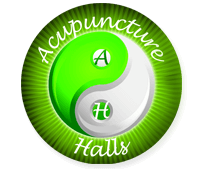
Muscle testing, also known as applied kinesiology, is a practice that assesses the body’s functional status by evaluating muscle strength and weakness. This technique has found a significant niche in the realm of nutrition and dietary assessments. By leveraging the body’s biofeedback mechanisms, practitioners aim to identify nutritional deficiencies, food sensitivities, and overall dietary needs. This article delves into the principles, methodologies, applications, and controversies surrounding muscle testing in nutrition.
Principles of Muscle Testing in Nutrition
Muscle testing is based on the idea that the body can communicate its needs and imbalances through changes in muscle strength. The foundational principle is that when a substance beneficial to the body is introduced, the muscles will remain strong, while exposure to harmful substances will cause muscle weakness. This concept is rooted in the body’s intrinsic energy fields and their interactions with external stimuli.
In nutritional assessments, muscle testing seeks to identify specific nutrients that the body may lack or react negatively to. Practitioners believe that by testing the strength of certain muscles in response to various foods or supplements, they can gain insights into the individual’s dietary requirements.
Methodologies of Muscle Testing in Nutrition
Several methodologies are employed in muscle testing for nutrition, each with its own techniques and protocols. The following are the most commonly used approaches:
1. Manual Muscle Testing (MMT)
- This involves applying pressure to a specific muscle or muscle group while the subject resists. The practitioner observes the muscle’s response to assess its strength.
- In nutritional assessments, the subject may hold a food item or supplement while the practitioner performs the test. A strong response indicates a positive reaction, while weakness suggests a negative reaction or sensitivity.
2. Surrogate Testing
- Used when direct testing on the subject is not possible (e.g., in infants or non-cooperative patients). A surrogate, often the practitioner, is tested while in contact with the subject.
- The surrogate’s muscle responses are interpreted as reflective of the subject’s nutritional needs.
3. Electrodermal Screening (EDS)
- Involves measuring electrical resistance on the skin’s surface in response to various substances.
- Used to identify sensitivities and imbalances, providing a non-invasive alternative to manual muscle testing.
4. Behavioral Kinesiology
- Combines muscle testing with psychological and emotional assessments.
- Evaluates how emotional and mental states influence nutritional needs and responses.
Applications of Muscle Testing in Nutrition
Muscle testing is applied in various nutritional contexts to address a range of dietary concerns:
1. Identifying Nutritional Deficiencies
- By testing the body’s response to vitamins, minerals, and other nutrients, practitioners can pinpoint specific deficiencies.
- This approach is used to tailor dietary plans and supplement regimens to individual needs.
2. Detecting Food Sensitivities and Allergies
- Muscle testing can help identify foods that trigger adverse reactions, even those not detected by conventional allergy tests.
- This is particularly useful for managing conditions like irritable bowel syndrome (IBS), migraines, and autoimmune disorders.
3. Optimizing Dietary Plans
- Muscle testing provides personalized dietary recommendations based on the body’s responses.
- Helps in creating balanced meal plans that enhance overall health and well-being.
4. Assessing Supplement Effectiveness
- Evaluates the impact of various supplements on the body’s energy and muscle strength.
- Ensures that supplements are beneficial and not causing adverse effects.
5. Holistic Health and Wellness
- Integrates nutritional assessments with other holistic practices to promote overall wellness.
- Supports the body’s natural healing processes through tailored nutrition.
Conclusion
Muscle testing in nutrition and dietary assessments offers a unique, individualized approach to understanding and addressing nutritional needs. Its applications range from identifying deficiencies and sensitivities to optimizing dietary plans and promoting holistic health.
For those considering muscle testing, it is essential to approach it with an informed perspective, understanding both its potential benefits and limitations. Combining muscle testing with conventional nutritional assessments and medical advice can provide a more comprehensive approach to achieving optimal health and well-being.
Visit the Acupuncture Halls clinic in San Juan Capistrano, near Dana Point and San Clemente, if you’re interested in muscle testing for nutrition and dietary assessments. For any health concerns, our licensed acupuncturist is on hand to provide assistance. You can schedule an appointment by calling 949-510-6333 or completing this form.
